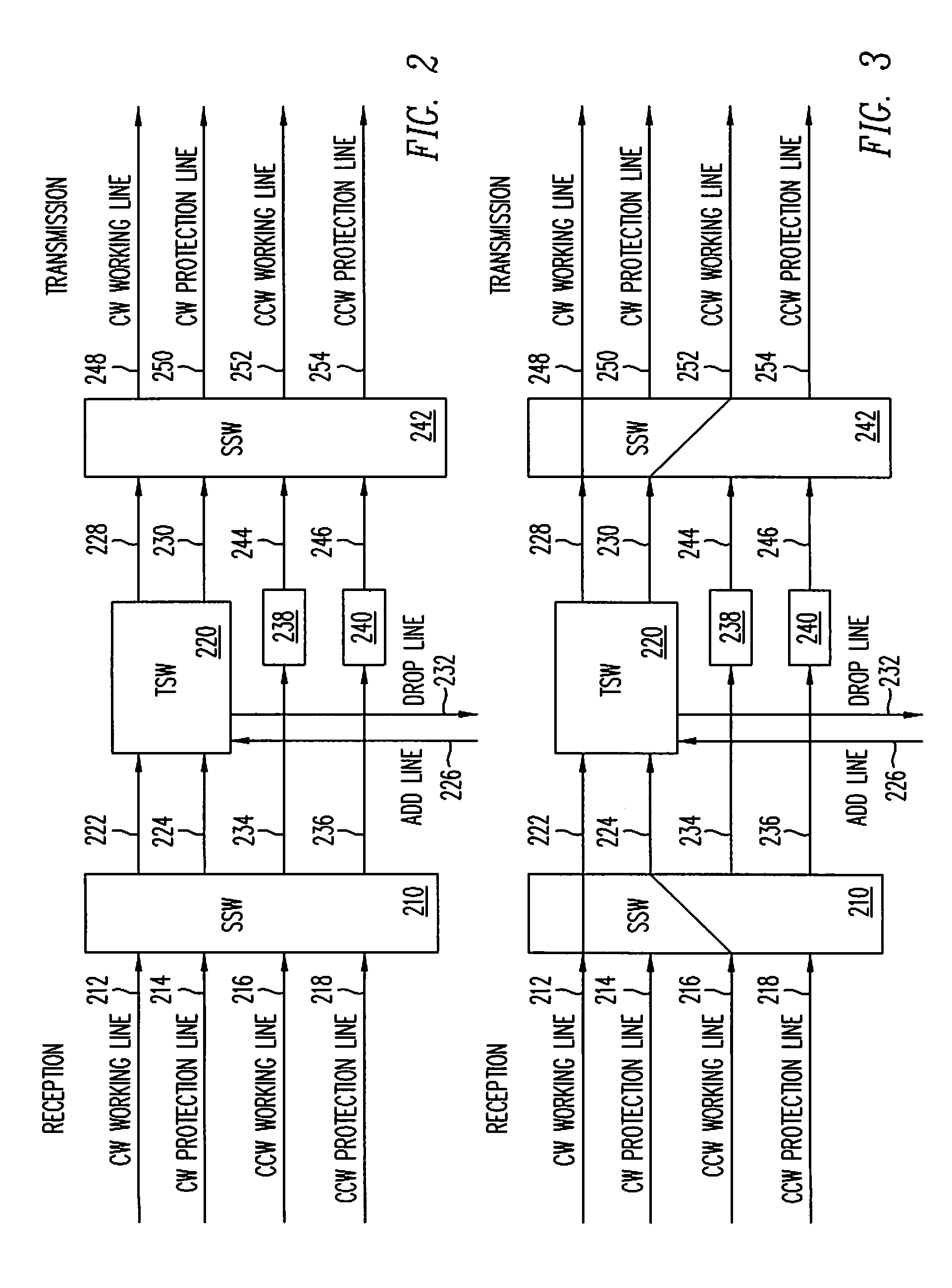Protocol for automatic traffic provisioning in 4-fiber BLSR SONET networks
a technology of automatic traffic provisioning and sonet network, applied in the direction of data switching network, data switching by path configuration, digital transmission, etc., can solve the problems of time-consuming, laborious, error-prone, etc., and achieve the effect of less cost, less cost and lowest cos
- Summary
- Abstract
- Description
- Claims
- Application Information
AI Technical Summary
Benefits of technology
Problems solved by technology
Method used
Image
Examples
Embodiment Construction
[0034]FIG. 1 shows an example of what is commonly called a four-fiber Bi-directional Line-Switched Ring (BLSR) network 100. The figure below shows a typical network consisting of two interconnected rings 102, 104. BLSR nodes 3 and 8, although parts of two distinct rings, are physically within the same network element 106. A network element is any device that is part of a SONET transmission path and serves one or more of the section, line, and path-terminating functions. In SONET, the five basic network elements are add / drop multiplexers, broadband digital cross-connects, wideband digital cross-connects, digital loop carriers, and switch interfaces, as known in the art. A network element has a given number of ports, for example 1024. Each port has an incoming fiber and / or and outgoing fiber.
[0035]In order to provision traffic entering the rings at one node and leaving at another, the prior art method entails manually determining which nodes will be needed to carry the bandwidth, sele...
PUM
 Login to View More
Login to View More Abstract
Description
Claims
Application Information
 Login to View More
Login to View More - R&D
- Intellectual Property
- Life Sciences
- Materials
- Tech Scout
- Unparalleled Data Quality
- Higher Quality Content
- 60% Fewer Hallucinations
Browse by: Latest US Patents, China's latest patents, Technical Efficacy Thesaurus, Application Domain, Technology Topic, Popular Technical Reports.
© 2025 PatSnap. All rights reserved.Legal|Privacy policy|Modern Slavery Act Transparency Statement|Sitemap|About US| Contact US: help@patsnap.com



